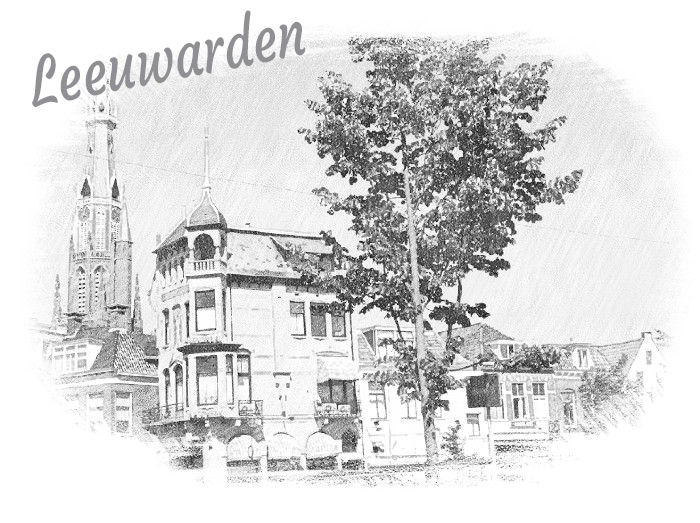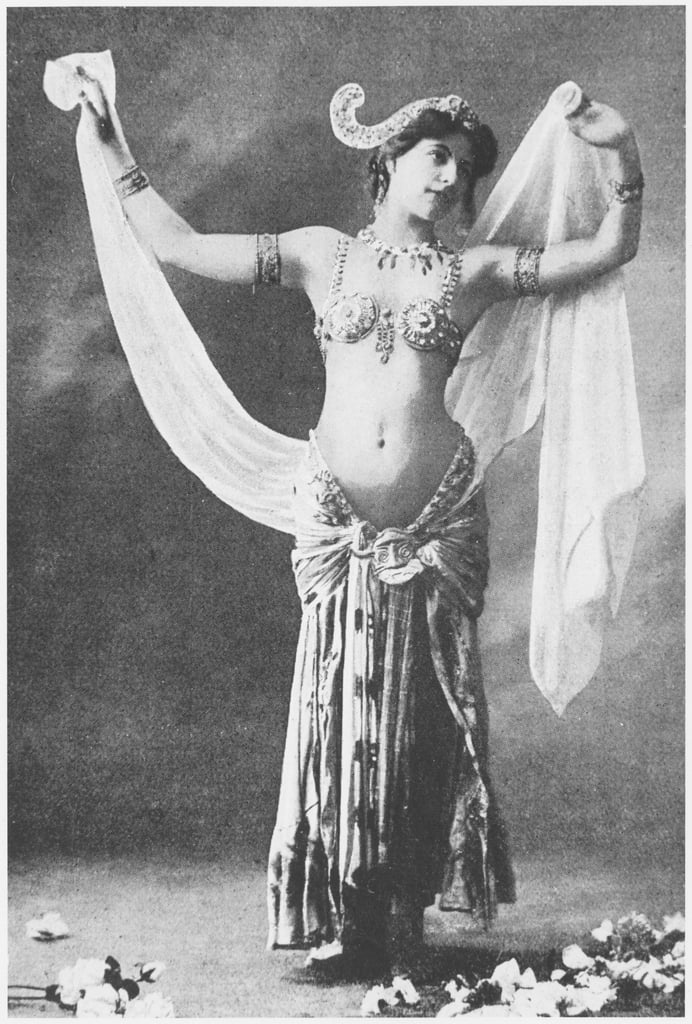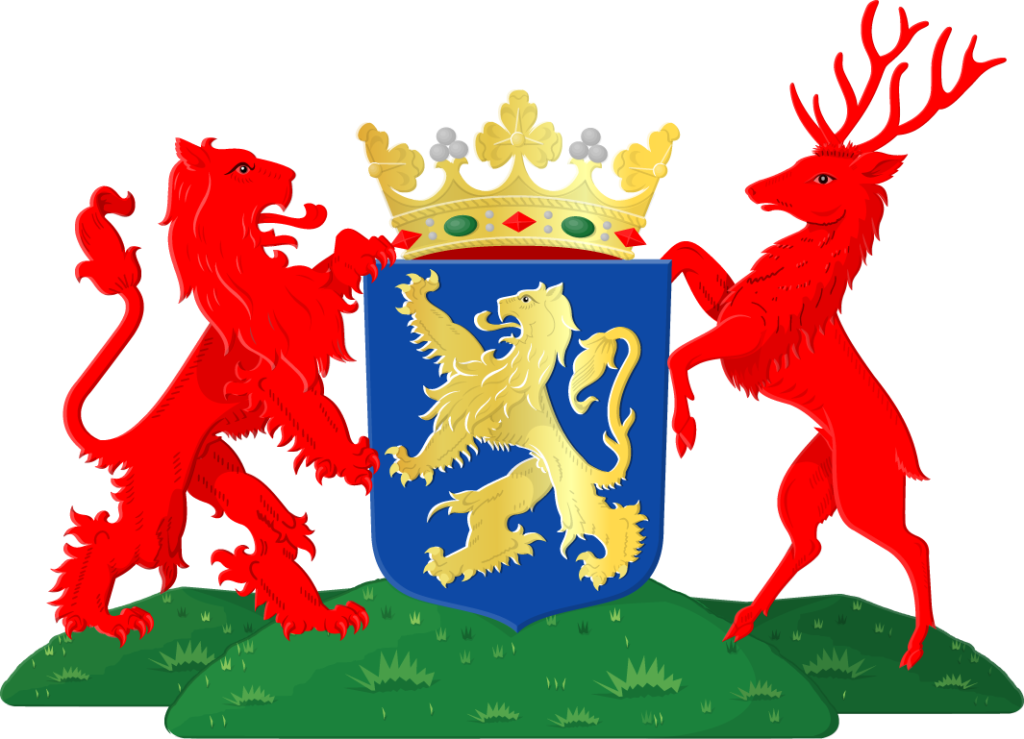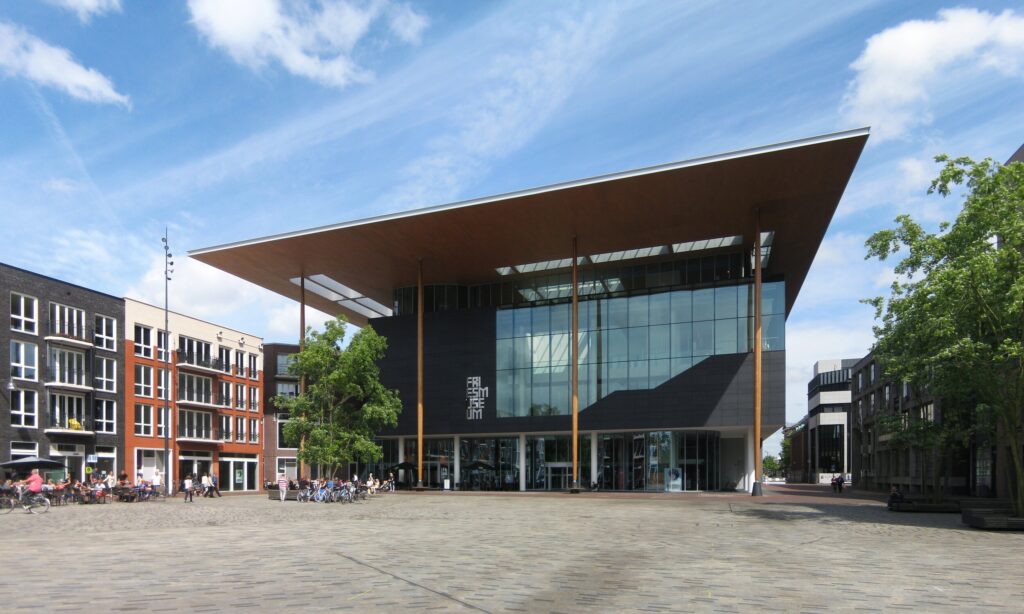leeuwarden

the Charming Capital of Friesland
The picturesque city of Leeuwarden offers a unique blend of rich history, cultural diversity, and modern vibrancy. As the capital city of Friesland, it boasts a captivating atmosphere that captivates visitors from all walks of life.
Stepping into Leeuwarden is like stepping back in time. The city’s well-preserved historic center, with its charming canals, cobblestone streets, and centuries-old buildings, transports visitors to a bygone era. Strolling through the city, one can marvel at landmarks such as the Oldehove, a leaning tower reminiscent of Pisa’s iconic structure.
Beyond its historical allure, Leeuwarden is also a hub of cultural delights. The city was designated as the European Capital of Culture in 2018, further highlighting its vibrant arts scene. Visitors can immerse themselves in museums, galleries, and theaters, as well as experience unique festivals that celebrate Friesland’s rich traditions.
Moreover, Leeuwarden’s warm and friendly locals add to the city’s charm. The locals, known as “Liwwadders,” are proud of their heritage and are always eager to share their stories with visitors.
Leeuwarden is not only a city that preserves its past but also embraces the future. With a progressive mindset, it offers modern amenities, excellent educational institutions, and a flourishing business environment. This makes it an attractive destination for both tourists and residents alike.
Whether you are interested in history, culture, or simply want to experience the essence of Dutch life, Leeuwarden is a city that will leave a lasting impression. With its unique blend of old-world charm and contemporary allure, it’s no wonder that Leeuwarden continues to captivate the hearts of all who venture to explore its treasures.

fries museum
The Fries Museum is a dynamic museum in the heart of the bustling city of Leeuwarden. Step inside the modern building and be inspired by your favorite stories or artwork. The sword of Grutte Pier, a romantic painting by the world famous Sir Lawrence Alma-Tadema, the fairytale landscape by Gerrit Benner… Or perhaps the adventurous life of Mata Hari.

Leeuwarden, the enchanting capital of Friesland in the Netherlands, invites you to embark on a captivating walking tour that unveils a tapestry of history, culture, and natural beauty. Steeped in tradition and modern charm, this picturesque city offers a unique exploration opportunity on foot.
Start your journey in the heart of Leeuwarden’s historic city center, where you’ll be immediately enchanted by the canals lined with centuries-old buildings. Not to be missed is the iconic Oldehove tower, a leaning medieval wonder that’s often compared to the Leaning Tower of Pisa.
As you meander through cobblestone streets, you’ll encounter the Fries Museum, a treasure trove of regional art and history. The city’s rich cultural heritage comes alive in its many galleries and street art, adding a contemporary flair to this historically rich tapestry.
Leeuwarden is also a gastronomic delight, with bustling markets where you can savor local specialties like suikerbrood (sugar bread) and Fries sundaes. Along the way, stop at cafés to enjoy a cup of coffee or the iconic Fryske Beane (Frisian coffee).
A walking tour in Leeuwarden is more than just a leisurely stroll; it’s an immersive journey into the soul of Friesland. Whether you’re interested in history, art, or simply absorbing the laid-back Dutch atmosphere, Leeuwarden offers an enriching experience that will leave you with lasting memories.
mata hari

Mata Hari, byname of Margaretha Geertruida MacLeod, née Zelle, (born August 7, 1876, Leeuwarden, Netherlands—died October 15, 1917, Vincennes, near Paris, France), Dutch dancer and courtesan whose name has become a synonym for the seductive female spy. She was shot by the French on charges of spying for Germany during World War I. The nature and extent of her espionage activities remain uncertain, and her guilt is widely contested.
Margaretha Zelle was the daughter of a prosperous hatter who lost the family’s money when Margaretha was a teenager. Her parents subsequently divorced, and, following the death of her mother in 1891, Zelle lived with relatives. She later attended a teachers’ college in Leiden. In 1895 she married Capt. Rudolph MacLeod, an officer in the Dutch colonial army. According to many reports, Rudolph was abusive, and he infected Margaretha with syphilis. From 1897 to 1902 they lived in Java and Sumatra. The couple had two children, though their son died, allegedly poisoned by the nanny; however, some have speculated that he contracted syphilis from his parents and that his death was caused by mercury treatments for the disease. After returning to Europe, the couple separated, eventually divorcing in 1906. Margaretha initially had custody of their daughter, but Rudolph refused to provide financial assistance, forcing her to leave the child in his care.
Destitute and hoping to earn enough money to reunite with her daughter, Margaretha began to dance professionally in Paris in 1905 under the name of Lady MacLeod. She soon renamed herself Mata Hari, a Malay expression for the Sun (literally, “eye of the day”). Tall, extremely attractive, superficially acquainted with East Indian dances, and willing to appear virtually nude in public, Mata Hari was an instant success in Paris and other large cities. Throughout her adult life she had numerous lovers, and many of them were military officers. Some of the liaisons involved money.
The facts regarding her espionage activities remain obscure. According to some accounts, in late 1915, while she was living in The Hague, an honorary German consul offered to pay her for whatever information she could obtain on her next trip to France. After her arrest by the French, she acknowledged that, while she had accepted money from Germany, she had given only outdated information to a German intelligence officer.
According to statements that Mata Hari supposedly made, she had agreed to act as a French spy in German-occupied Belgium and did not bother to tell French intelligence of her prior arrangement with the Germans. She had intended to secure for the Allies the assistance of Ernest Augustus, duke of Brunswick-Lüneburg in Germany and heir to the dukedom of Cumberland in the British peerage.
The French began to suspect Mata Hari of duplicity, and on February 13, 1917, she was arrested and imprisoned in Paris. Officials blamed her espionage activities on Germany’s behalf for the death of up to 50,000 French soldiers, though there was no evidence to support that allegation. On July 24–25, 1917, she was tried by a military court and sentenced to death. Some three months later she was shot by a firing squad. Although the claim that she blew kisses to her executioners was later discredited, the assertion that she refused to wear a blindfold is probably true.
Get a Britannica Premium subscription and gain access to exclusive content.
In the years following her death, Mata Hari became the subject of numerous books and movies. As more information was uncovered, doubts arose over her guilt. The German government publicly exculpated her in 1930, and the French dossier documenting her activities reportedly indicated her innocence. In 2017 France released various documents relating to Mata Hari, and they led many to believe that she had been a scapegoat of French officials looking for someone to blame for the country’s setbacks in the war. In addition, it was speculated that her disregard for societal norms also played a role in her arrest, conviction, and execution


The coat of arms description does not mention what type of crown should be above the shield. Not much is known about the origin of the coat of arms, it is said to be a striking coat of arms, referring to the lion in the name Leeuwarden, or a different colored variant of the influential Minnema family. Historian Paul Noomen calls these connections unlikely. Most likely the lion is related to Saint Vitus, patron saint of Leeuwarden and the patron of the oldest parish church, the Oldehove. As a symbol, the lion appears on the city seal from 1422 (and not 1390), initially as a walking lion. The lion has appeared on city coins since about 1430, now as a climbing lion. A coin from 1471 shows this lion climbing in a coat of arms.
The oldest known image in color is from the year 1584. The crown dates from 1806. According to experts, the coat of arms could be improved, for example the coat of arms should actually bear five fleurons, as well as shield holders with the red lion of the Van Burmania family and a red deer from the Van Cammingha family.











